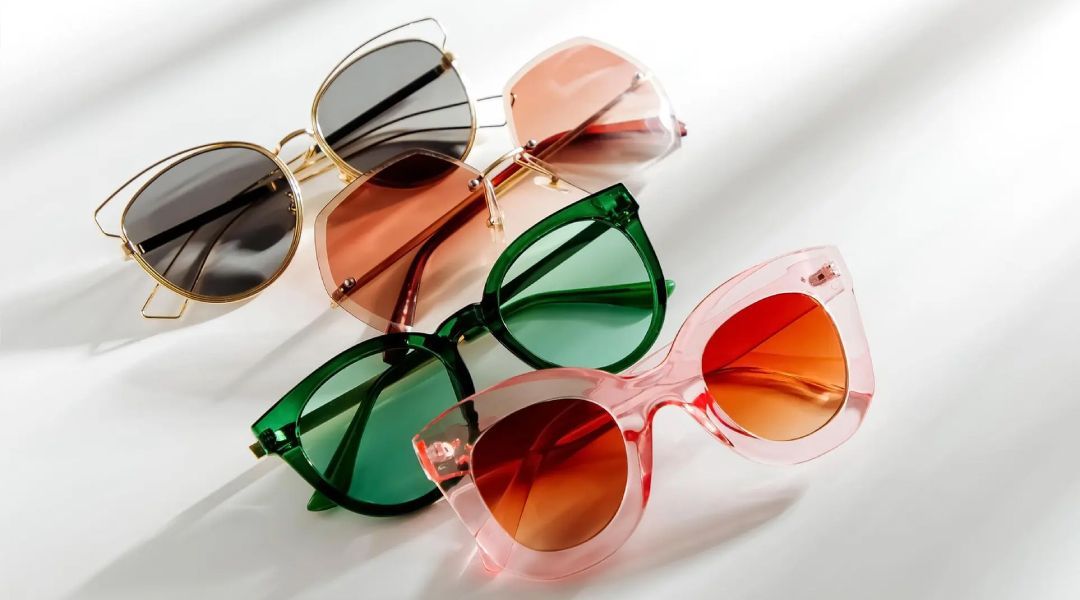Exploring Eyewear Lens Tints and Coatings: Fashion & Function

Read time: 4 minutes
Your choice in eyewear extends beyond the frame's design; it also encompasses the lenses. Eyewear lenses are available in an array of tints and coatings, each tailored to offer specific advantages. Whether your aim is to minimize glare, shield your eyes from harmful UV radiation, or express your unique fashion sense, a firm grasp of your choices can guide you in making an informed selection. In this all-encompassing guide, we'll navigate the realm of eyewear lens tints and coatings.
Lens Tints
Lens tints not only enrich your visual perception but also serve practical functions. They manifest in a spectrum of colors, each suitable for diverse activities and environmental circumstances. Here's a breakdown of some of the common lens tints and their respective benefits:
- Gray Tints: Neutral gray-tinted lenses reduce brightness without distorting colors, making them perfect for daily use and outdoor pursuits.
- Brown Tints: Brown-tinted lenses enhance contrast and depth perception, making them popular for activities like fishing, golf, and driving.
- Green Tints: Green-tinted lenses excel at preserving color accuracy and contrast, particularly in bright light conditions during outdoor endeavors.
- Yellow Tints: Yellow-tinted lenses are ideal for low-light scenarios, such as dawn or dusk, improving depth perception and minimizing glare.
- Rose Tints: Rose-tinted lenses enhance visibility in low-light and overcast conditions, often favored for sports like skiing and cycling.
- Mirrored Tints: Mirrored lenses feature a reflective outer coating, providing excellent glare reduction while offering a stylish range of colors.
- Gradient Tints: Gradient lenses are darker at the top, gradually lightening toward the bottom, suited for activities requiring clear vision at varying distances.
Lens Coatings
Lens coatings are applied to eyewear lenses to enhance their performance, longevity, and appearance, significantly enhancing the overall experience. Here are some prevalent lens coatings:
- Anti-Reflective (AR) Coating: AR coating minimizes reflections and glare on the lens surface, reducing eye strain and enhancing vision, particularly beneficial when using digital screens.
- UV Protection Coating: This coating effectively shields your eyes from the harmful effects of UV rays, offering 100% UV protection.
- Scratch-Resistant Coating: Enhancing lens durability, this coating reduces the likelihood of scratches, extending your eyewear's lifespan.
- Hydrophobic and Oleophobic Coating: These coatings repel water, oil, and smudges, ensuring clear lenses in rainy or humid conditions.
- Photochromic (Transitions) Coating: Photochromic lenses automatically adapt to changing light conditions, darkening in bright light and clearing indoors, perfect for on-the-go individuals.
- Polarized Coating: Polarized lenses combat glare from surfaces like water, snow, and roads, making them an excellent choice for outdoor activities, especially water sports and driving.
- Mirror Coating: Besides adding style to your eyewear, mirror coatings enhance glare reduction.
Custom Combinations
Eyewear manufacturers often offer customized combinations of tints and coatings, enabling you to tailor your glasses to your unique requirements and style preferences. These personalized choices ensure that your eyewear not only improves your vision but also complements your individual fashion statement.
Premium Anti-Reflective (AR) Coatings
Standard anti-reflective (AR) coatings have evolved significantly in terms of functionality. Initially designed to reduce glare and lens reflections, these coatings have now incorporated additional features, making them more versatile and valuable than ever before.
Notable enhancements in standard AR coatings include:
- UV Protective Coating: Many standard AR coatings now feature built-in UV protection, shielding your eyes from the sun's harmful UV rays in addition to reducing glare.
- Scratch-Resistant Coating: The inclusion of a scratch-resistant coating enhances lens durability, reducing the risk of vision-impairing scratches and prolonging the life of your eyewear.
- Hydrophobic and Oleophobic Coating: To maintain lens clarity, these coatings resist smudges from fingerprints or water droplets, ensuring that your eyewear stays clean and clear.
AR coating advancements have transformed eyewear into multifunctional accessories, enhancing your visual experience, protecting against UV rays, increasing lens durability, and maintaining clarity in various conditions. When choosing eyewear, it's important to inquire about the specific features of the AR coating, as not all coatings offer the same benefits. The combination of glare reduction, UV protection, scratch resistance, and smudge resistance can provide a complete solution for your eyewear needs. This evolution in AR coatings showcases the eyewear industry's commitment to improving functionality and durability, making your eyeglasses versatile accessories that cater to various needs and styles, whether for extended screen time, outdoor activities, or as stylish and functional accessories.
The Takeaway
In conclusion, the selection of appropriate lens tints and coatings is vital for both visual enhancement and style. Whether you're a fashion-forward trendsetter, a sports enthusiast, or someone concerned about eye protection, there's an ideal combination to meet your needs. Our opticians are specialists in all aspects of lenses, tints and coatings.
Urban Optiks proudly features Zeiss Premium Lenses, the industry's premier lens manufacturer. Their cutting-edge lenses from Zeiss offer unrivaled clarity and vision enhancement, elevating the style and function of every frame in their collection. With a legacy of over a century, Zeiss ensures customers experience the world with precision, anti-reflective coatings, UV protection, and distortion-free optics.
Share this blog post on social or with a friend:
The information provided in this article is intended for general knowledge and educational purposes only and should not be construed as medical advice. It is strongly recommended to consult with an eye care professional for personalized recommendations and guidance regarding your individual needs and eye health concerns.
All of Urban Optiks Optometry's blog posts and articles contain information carefully curated from openly sourced materials available in the public domain. We strive to ensure the accuracy and relevance of the information provided. For a comprehensive understanding of our practices and to read our full disclosure statement, please click here.


















